
INVERTEBRATES
The Most Plentiful Animal on Earth!

INVERTEBRATES
The Most Plentiful Animal on Earth!
As the name suggests, invertebrates are animals that do not possess a vertebral column (spine or backbone). With just one feature to define them all, this makes for a huge group of animals: insects, snails, worms, crabs, octopuses and many, many more. Invertebrates make up 97% of all living animals on the earth, and to say this is a wildly diverse grouping is an understatement. Consider the adult female Dolania americana (mayfly) who lives for only five minutes as an adult… or the Turritopsis dohrnii (jellyfish), who can – at least theoretically – live for 500+ billion years!
“Clam” is an informal name that refers to bivalves (such as oysters, scallops, mussels, cockles, clams, and numerous…
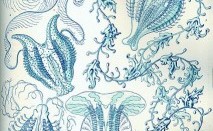 Comb jelly
Comb jellyThis phylum of animals inhabits marine waters worldwide. They are named for their distinctive rows of cilia, or combs,…
 Corals
CoralsThese marine invertebrates are known for the dazzling calcified colonies they create as they multiply and grow. Each colony…
Crinoids, aptly nicknamed “feather stars”, can inhabit a wide range of marine environments and, judging by the fossil…
 Crustaceans
CrustaceansThis very large group of arthropods includes familiar animals such as shrimp, crabs, lobsters, crayfish, and barnacles.…
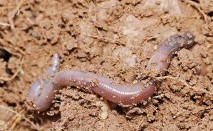 Earthworms
EarthwormsThese tube shaped, segmented worms commonly live in the soil and feed on both live and dead organic matter. Earthworms…
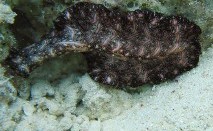 Flatworms
FlatwormsThe structure of flatworms (flat) reflects their physiology – they have no body cavity other than a gut in most cases…
Hydras make up a genus of tiny (up to 10 mm long), tentacle, aquatic, predatory animals that are commonly found in unpolluted…
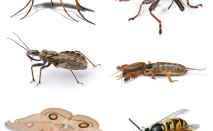 Insects
InsectsThis class of invertebrates has a chitinous skeleton, a three part body (consisting of a head, thorax, and abdomen), six…
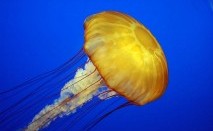 Jellyfish
JellyfishJellyfish are typically free-swimming animals consisting of a gelatinous, inverted-umbrella body form (the bell) with…
While similar in some ways to earthworms, leeches differ in other distinct ways – for example, leeches do not have bristles…
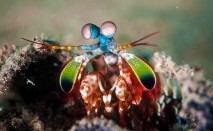 Mantis Shrimp
Mantis ShrimpThe mantis shrimp is not actually a shrimp, but a different kind of crustacean of the order Stomatopoda, known for its…
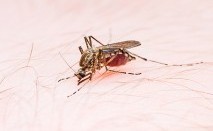 Mosquito
MosquitoMosquitos are a family of small flies (the name “Mosquito” literally means “Small Fly” in Spanish)…
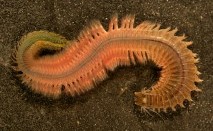 Ragworms
RagwormsThis family of polychaete worms contains about 500 mostly marine species. They can be found in all water depths – hiding…
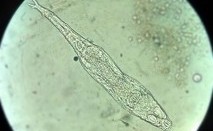 Rotifers
RotifersThese microscopic and near-microscopic pseudocoelomates are common in freshwater environments all over the world (and…
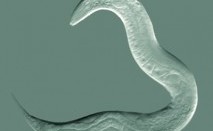 Roundworms
RoundwormsThis diverse phylum is made up of an estimated 1 million species of roundworms, many of which are parasitic. Nematodes…
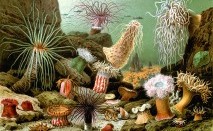 Sea anemones
Sea anemonesThese water dwelling, carnivorous animals are named for a type of flower, no doubt owing to their often colorful flower-like…
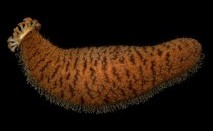 Sea cucumbers
Sea cucumbersThese tubular echinoderms can be found in oceans all over the world – in some deep sea environments they can be found…
 Sea stars
Sea starsAlso known as starfish, these echinoderms are found on the sea floors of all the world’s oceans from the equatorial…
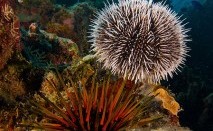 Sea urchins
Sea urchinsThese small, spiny, globular animals inhabit all the oceans of the world and can survive in shallow intertidal zones,…
 Snails and slugs
Snails and slugs“Snail” is a common name applied to most members of the class “Gastropoda” that have a coiled shell that is big…
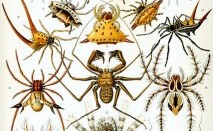 Spiders and other arachnids
Spiders and other arachnidsThe Arachnid class is comprised of over 100,000 described species and includes such familiar organisms as spiders, scorpions,…
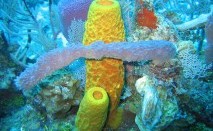 Sponges
SpongesSponges are aquatic, multicellular organisms whose body structure is full of holes and channels that allow water to circulate…
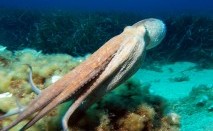 Squids, octopi, nautili & cuttlefish
Squids, octopi, nautili & cuttlefishThese ocean dwelling animals are characterized by bilateral body symmetry, a prominent head, and a set of arms, or tentacles.…
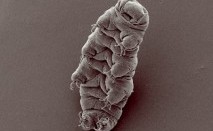 Tardigrades
Tardigrades“Water bears” or “moss piglets” are tiny (~0.5 mm), aquatic, segmented animals that are able to withstand extreme…
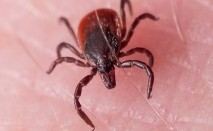 Tick
TickTicks are small, blood-sucking arachnids of the order Parasitiformes, with over 900 known species.
Learning about animals, you can discover many fascinating, even beautiful facts… but there are also things that can give you nightmares! Enter the strepsiptera (“twisted-wing parasite”). The adult female has no limbs, wings, or mouth – she simply lives in and feeds off her host (typically a wasp). When it becomes time to mate, she protrudes part of her abdomen from between the plates of her host and uses mind control to get the wasp to fly off to nearby males. The males have wings, and fly around for about five hours before dying, their only purpose seeking out females to mate with. After the female is impregnated, her own young grow and consume her. Once there is nothing left to eat, they leave their host wasp, infiltrate the wasp nest's nursery, then latch on to larvae to create their own “zombie wasp” host and continue the grisly cycle!
 Discover Animals is a web-based educational resource offered by the NAIA
Discover Animals is a web-based educational resource offered by the NAIA